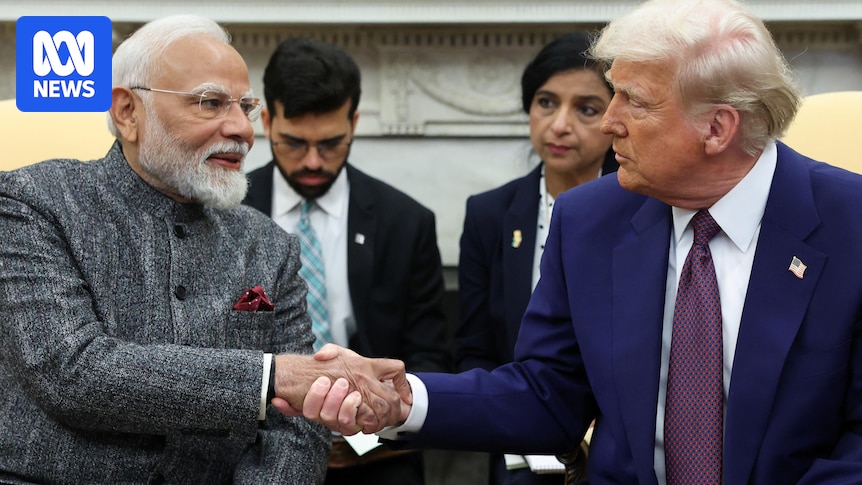
Indian exporters are facing a significant challenge as the United States implements steep new tariffs on goods from the South Asian nation, a move that could severely impact trade between the two countries. The tariffs, which add an additional 25% to existing levies, will take some tariffs to over 50% starting Wednesday, local time. This development follows the collapse of trade talks and is part of a retaliatory measure by the US, led by President Donald Trump, in response to India’s purchase of Russian oil, which is seen as supporting Russia’s war efforts in Ukraine.
The introduction of these tariffs is expected to cause a sharp decline in US orders for Indian goods, escalating tensions between the two strategic partners. A commerce ministry official, speaking anonymously, confirmed that the Indian government does not anticipate any immediate relief or delay in the tariffs. In response, Indian exporters affected by the tariffs are set to receive financial assistance and will be encouraged to explore alternative markets such as China, Latin America, and the Middle East.
Impact on Indian Economy and Trade
The tariff hike comes at a time when India’s diamond industry is already struggling due to sluggish sales in key markets, including China. The industry is now bracing for further economic headwinds in the US, which is a significant market for Indian diamonds. Exceptions to the new tariffs include shipments already in transit, humanitarian aid, and items under reciprocal trade programs.
Meanwhile, the Indian rupee has reacted to the news by falling to a three-week low against the dollar, despite some recovery after suspected central bank intervention. The tariff increase follows five rounds of unsuccessful negotiations, during which Indian officials had hoped to cap the tariffs at 15%.
Geopolitical Implications and Strategic Realignments
The tariff imposition raises broader questions about the US-India relationship, especially as both countries are important security partners with shared concerns about China. Despite the current trade tensions, both nations have expressed eagerness to enhance their bilateral relationship, focusing on defense cooperation, trade and investment, energy security, and counterterrorism efforts. This was reaffirmed in recent statements by the US State Department and India’s Ministry of External Affairs.
However, the trade standoff has also prompted speculation about whether US policies might push India closer to China. Notably, India and China have agreed to resume direct flights for the first time in five years, ahead of a meeting between Indian Prime Minister Narendra Modi and Chinese President Xi Jinping.
Economic and Industry Reactions
Exporter groups estimate that the tariff hikes could impact nearly 55% of India’s merchandise exports to the US, valued at $87 billion, potentially benefiting competitors like Bangladesh, China, and Vietnam. Pankaj Chadha, president of the Engineering Exports Promotion Council, noted that US customers have already halted new orders, predicting a 20% to 30% drop in exports from September onward.
The Indian government has promised financial aid, including increased subsidies on bank loans and support for market diversification. However, Chadha expressed skepticism about the feasibility of diversifying to other markets or selling domestically. The government has identified nearly 50 countries as potential new markets for Indian exports, particularly for textiles, processed foods, leather goods, and marine products.
Broader Economic Impact and Future Outlook
Private sector analysts warn that the sustained 50% tariff could have significant repercussions on India’s economy and corporate profits, potentially leading to the steepest earnings downgrades in Asia. Capital Economics recently projected that full US tariffs could reduce India’s economic growth by 0.8 percentage points both this year and the next.
Foreign Minister S. Jaishankar has emphasized that trade discussions are ongoing and has criticized the US for not applying the same scrutiny to other major buyers of Russian oil, such as China and the European Union. The US, meanwhile, has expressed a commitment to collaborate with India on energy security and economic growth.
Prime Minister Narendra Modi has vowed to protect the interests of Indian farmers, even at a significant cost. He is also seeking to strengthen ties with China, with plans for his first visit there in seven years later this month.
As the situation unfolds, the global community will be watching closely to see how these developments impact the broader geopolitical landscape and economic ties between the world’s largest and fifth-largest economies.







